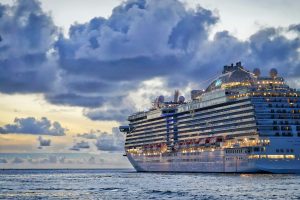Spotting Washington’s Majestic Peaks: A Guide to the Pacific Northwest

The Pacific Northwest is known for its stunning natural beauty, and one of the region’s favourite pastimes is hiking. Washington state boasts numerous mountain ranges, but with so many peaks, it can be tricky to know exactly what you’re looking at when taking in those breathtaking views. To help, we consulted William Gallin, a carbon sequestration geologist with the Washington State Department of Natural Resources, to pinpoint some of the most prominent features in Washington’s mountainous landscape.
The North Cascades
The Cascade Range stretches from Canada to Northern California, spanning over 700 miles and towering above other ranges in the state with its rugged, dramatic terrain. The Cascades in Washington are divided into the North and South Cascades, formed by tectonic forces as the Earth’s crust collided with North America. The North Cascades, found north of the I-90, are home to Washington’s highest non-volcanic peaks.
As you drive north on Interstate 5 toward Everett, you’ll notice some distinct peaks. Three Fingers and Whitehorse Mountain stand out with their sharp, triangular forms. These snow-covered mountains are located east of Arlington, and Whitehorse can also be seen from the south side of State Route 530 near Darrington.
While travelling on I-5, you might also catch a glimpse of Mount Pilchuck. Though not as tall or as sharply peaked as Three Fingers or Whitehorse, it’s still an impressive sight.
On US Highway 2, the scenery changes with views of Mount Index and Baring Mountain. Both are known for their steep, glacier-carved faces. Mount Index can be spotted on the south side of the highway near the town of Index, while Baring Mountain rises dramatically on the north side of the road.
Washington’s Non-Volcanic Giants
Some of the highest non-volcanic peaks in Washington are a bit more remote. Bonanza Peak, standing at 9,511 feet, is located northwest of Lake Chelan. Nearby, Mount Stuart rises to 9,416 feet near Cle Elum, offering a challenge to experienced climbers.
The Stratovolcanoes of the Northern Cascades
The North Cascades are also home to two of Washington’s five active stratovolcanoes: Mount Baker and Glacier Peak. Stratovolcanoes are characterised by their cone-shaped formations, created by layers of ash, lava, and debris from previous eruptions. All five of Washington’s stratovolcanoes are considered active, and both Mount Baker and Glacier Peak have been prioritised by the National Volcano Early Warning System, indicating they are expected to erupt again.
Mount Baker, Washington’s third-highest peak, is easily visible from several vantage points, including Bellingham and the San Juan Islands. One of its most striking features is Black Buttes, the remains of an ancient eroded volcano that forms a prominent peak on Mount Baker’s flanks. On the southwestern side, the jagged Twin Sisters offer another dramatic sight, though these peaks are much smaller than the Black Buttes.
Glacier Peak, while less prominent in the skyline, can occasionally be seen from Seattle, identifiable by its sharp, rocky summit, in contrast to Mount Baker’s more rounded peak. Hikers around southeast Darrington may also catch glimpses of this elusive stratovolcano.





